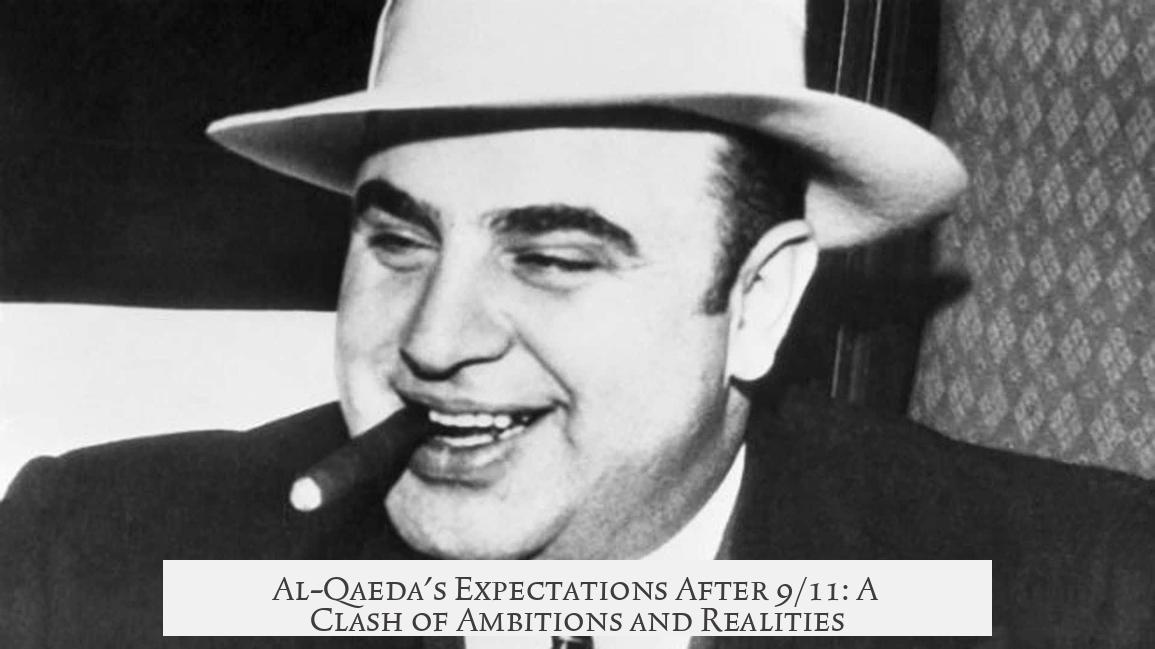Al-Qaeda expected that after the 9/11 attacks, the United States would become militarily and politically weakened by protracted, costly warfare, leading to a loss of resolve and eventual withdrawal from Afghanistan and other conflict zones. Their strategy relied on inflicting continuous casualties and engaging the US in difficult terrain to exhaust its military and political will.
Osama bin Laden’s vision after 9/11 was anchored in the belief that the US, sensitive to military casualties, would tire quickly in a ground conflict. He planned to “bleed the US dry” by drawing American forces into prolonged infantry battles in Afghanistan’s mountainous terrain. This environment limited the effectiveness of vehicles, artillery, and air support, giving Al-Qaeda and allied Taliban fighters a tactical edge in guerrilla warfare.
Bin Laden explicitly referenced the 1993 Battle of Mogadishu as a precedent. At Mogadishu, US forces suffered 21 fatalities in a firefight that led to a rapid withdrawal of 28,000 United Nations troops. Although he conflated UN and US forces in his speeches, this example was central to his claim that the US is casualty-averse and prone to disengage after sustaining direct losses.
Initially, Al-Qaeda engaged in asymmetric combat tactics aimed at attrition, leveraging guerrilla warfare and ambushes. These methods were meant to incrementally erode US morale and political support for the war. However, the conflict quickly escalated to more conventional battles. For instance, Operation Anaconda in 2002 involved pitched infantry engagements with thousands of troops on both sides fighting in Afghanistan’s Shah-i-kot Valley.
Bin Laden’s readiness to engage in direct confrontations during such operations indicates a dual approach. While guerrilla tactics were prominent, he was confident enough to risk large-scale battles when his forces had tactical advantages. Some analysts debate whether Al-Qaeda originally planned a guerrilla campaign or pivoted to it following initial conventional defeats.
In a 2004 speech, Bin Laden acknowledged the US’s military might but argued that provoking the US into overstretching its forces would cause human, economic, and political losses for America without delivering strategic gains. He emphasized Al-Qaeda’s experience in guerrilla warfare and war of attrition, citing their role in the Soviet withdrawal from Afghanistan after a decade of costly conflict.
Despite these expectations, Bin Laden and Al-Qaeda misjudged several factors. They underestimated the strength and resolve of the US government and military in the post-9/11 period. The US maintained a long-term, multifaceted campaign to dismantle Al-Qaeda and support Afghan governance, demonstrating more resilience than Al-Qaeda anticipated.
| Aspect | Al-Qaeda’s Expectation | Reality |
|---|---|---|
| Tactical Warfare | Guerrilla warfare bleeding US military in difficult terrain | Initial guerrilla followed by conventional battles; US adapted tactics |
| US Casualty Aversion | US would pull out quickly after sustaining casualties | US maintained engagement despite losses and political pressure |
| Outcome | US forced to withdraw, similar to Soviet withdrawal from Afghanistan | US-led coalition stayed for years, degrading Al-Qaeda’s capabilities |
Bin Laden’s strategic calculation was that the US’s political will depended heavily on minimizing troop casualties. By provoking the US to send forces into remote areas marked with Al-Qaeda flags, he intended to draw American troops into costly operations with no clear victory but significant losses for the US politically and economically.
Operationally, Al-Qaeda’s familiarity with guerrilla warfare gave it confidence to sustain prolonged engagements. Bin Laden framed this campaign as a war of attrition aimed at weakening a superpower, analogous to the conflict with the Soviet Union in the 1980s. From his perspective, time and persistent resistance would cause the US to retreat.
Ultimately, though Al-Qaeda’s framework for what would happen after 9/11 rested on this strategy, the Americans adapted strategically, maintained political support for the “War on Terror,” and inflicted heavy attrition on Al-Qaeda networks. This disconnect between Al-Qaeda’s expectations and the reality of US resolve was a critical factor in the prolonged conflict.
- Al-Qaeda expected the US to be quickly worn down by costly infantry battles in Afghanistan.
- Bin Laden cited the 1993 Battle of Mogadishu as evidence of US casualty aversion.
- The group combined guerrilla warfare with conventional battles, confident in their terrain advantage.
- Bin Laden believed provoking US overextension would cause economic and political losses.
- He underestimated US resilience and long-term military commitment post-9/11.
What Did Al-Qaeda Think Was Going to Happen After 9/11?

Simply put, Al-Qaeda believed their 9/11 attacks would drag the United States into a long, costly war that would drain its resources and resolve, ultimately forcing America to withdraw, leaving them victorious. But what made Bin Laden and his followers so confident?
Let’s take a deep dive into the mindset behind one of the most devastating terror attacks in history, reveal the strategic expectations Al-Qaeda held, and uncover where their calculations went awry.
Bleeding America Dry—Literally and Strategically

Right after 9/11, Bin Laden’s game plan was clear: lure the U.S. military into Afghanistan’s treacherous mountains and make their lives miserable. He envisioned infantry battles—not flashy mechanized warfare—but brutal, drawn-out fights in terrain where vehicles, tanks, and air support would struggle. It’s like inviting an eagle into a dense forest—it loses its edge.
This tactic, called asymmetric warfare, aimed to “bleed the US dry” through steady casualties, forcing the superpower to rethink its presence. Bin Laden banked on America’s so-called “aversion to casualties,” expecting even a small number of American deaths would sap support at home.
Why Did Al-Qaeda Think the US Would Quit?

If you’ve followed American military history, it seems hard to believe that the U.S. might fold after losing a few soldiers. But Al-Qaeda’s logic was based on real events—like the notorious 1993 Battle of Mogadishu in Somalia.
In that clash, U.S. forces lost 21 soldiers, and the fallout was swift: tens of thousands of UN troops withdrew, and American involvement dimmed sharply. Bin Laden often referenced this event, albeit exaggerating it by mixing up UN and American troops to spotlight U.S. sensitivity to casualties and political pressure.
To Al-Qaeda, Mogadishu was a blueprint. If they could impose limited yet painful losses on the U.S., it could spark a domino effect—losing public support, pulling troops out, and effectively achieving a strategic win without defeating America on conventional battlefields.
From Guerrilla Ambushes to Open Battles

Initially, Al-Qaeda preferred hit-and-run guerrilla tactics—strikes from the shadows. But by the time Operation Anaconda rolled around in 2002, things shifted. Thousands of fighters on both sides clashed in regular infantry battles at the Shah-i-kot Valley.
Surprisingly, Bin Laden displayed enough confidence to risk his forces in these head-on fights, blending guerrilla warfare with conventional engagements. This dual approach was their way of maximizing pressure, hoping to pick their spots while still standing firm when necessary.
There’s debate whether guerrilla warfare was the original intent or a fallback after early setbacks. Regardless, Bin Laden believed this mix could exhaust the U.S. military.
Provoking the Beast: The Strategy of Attrition

Fast forward to Bin Laden’s 2004 speech: he described how a handful of fighters could bait the U.S. into overextending itself. “Send two mujahidin to the furthest point east… to raise a piece of cloth with al-Qaida,” and America’s generals would rush in, causing the U.S. to suffer heavy economic, human, and political losses—all while benefiting military contractors.
Talk about cunning psychological warfare. Bin Laden clearly understood the power of provocation. His strategy aimed to drag America into a self-destructive spiral, akin to how guerrillas bled the Soviet Union for almost a decade.
Speaking of Russia, Bin Laden often cited the Soviet-Afghan war as proof that a superpower could be defeated by attrition and guerrilla tactics. The Soviets left Afghanistan bankrupt and humiliated. He believed America would follow the same fate.
Where Did Al-Qaeda Stumble?

Here’s where reality punched through the fog of Al-Qaeda’s plans:
- The U.S. resolve was far tougher than anticipated. America was not about to tire after initial setbacks.
- The cost of war, while high, did not translate into political will to retreat. Patriotism, shock, and determination galvanized the country.
- Technological and tactical advantages gave the U.S. the upper hand. Despite complex terrains, American forces adapted quickly with overwhelming airpower and special operations.
So, Bin Laden’s assumption that the U.S. would quit after a few casualties was a major miscalculation.
What Can We Learn from This?

Understanding Al-Qaeda’s post-9/11 expectations clarifies how terrorism and asymmetric warfare aim not just for physical destruction but political paralysis.
Bin Laden’s plan depended on exploiting perceived American fragility. Yet, history shows how strong resolve, public unity, and military adaptation can defy terror strategies designed to erode willpower.
It’s a brutal chess game where one side aims to bleed resources, while the other must avoid checkmate and stay potent. After 9/11, Al-Qaeda thought they’d check the U.S., but instead, they sparked decades of relentless conflict proving that resolve can trump terror.
Want to Know More?
Exploring Al-Qaeda’s strategic thinking reveals something essential: the battle wasn’t just physical but psychological. It raises questions about how democracies respond to asymmetric threats. Would America behave the same way post-9/11 if history repeated itself? Or has the cost of prolonged engagement permanently reshaped U.S. foreign policy?
Digging into history can help us predict, adapt, and hopefully prevent future attacks designed to manipulate national will. One takeaway is clear: no matter the terrain or tactics, understanding your adversary’s mindset is crucial.
Summary Table: Al-Qaeda’s Post-9/11 Expectations vs. Reality
| Expectation | Reality |
|---|---|
| US would withdraw after limited casualties. | US sustained casualties but increased military presence. |
| Mountain warfare would prevent US air and vehicle use. | Technological superiority allowed effective air support and mobility. |
| Guerrilla and conventional tactics would break US will. | Adaptation and resilience prevented breakdown. |
| Provoking US overextension would lead to economic collapse. | Economic impact was moderate; US defense spending increased. |
Al-Qaeda’s misjudgments showcase how underestimating an opponent’s resolve can dramatically alter the outcome of conflicts.
So, next time you hear about strategic calculations from terrorist groups, remember: their beliefs shape their actions but not always the final outcome.




